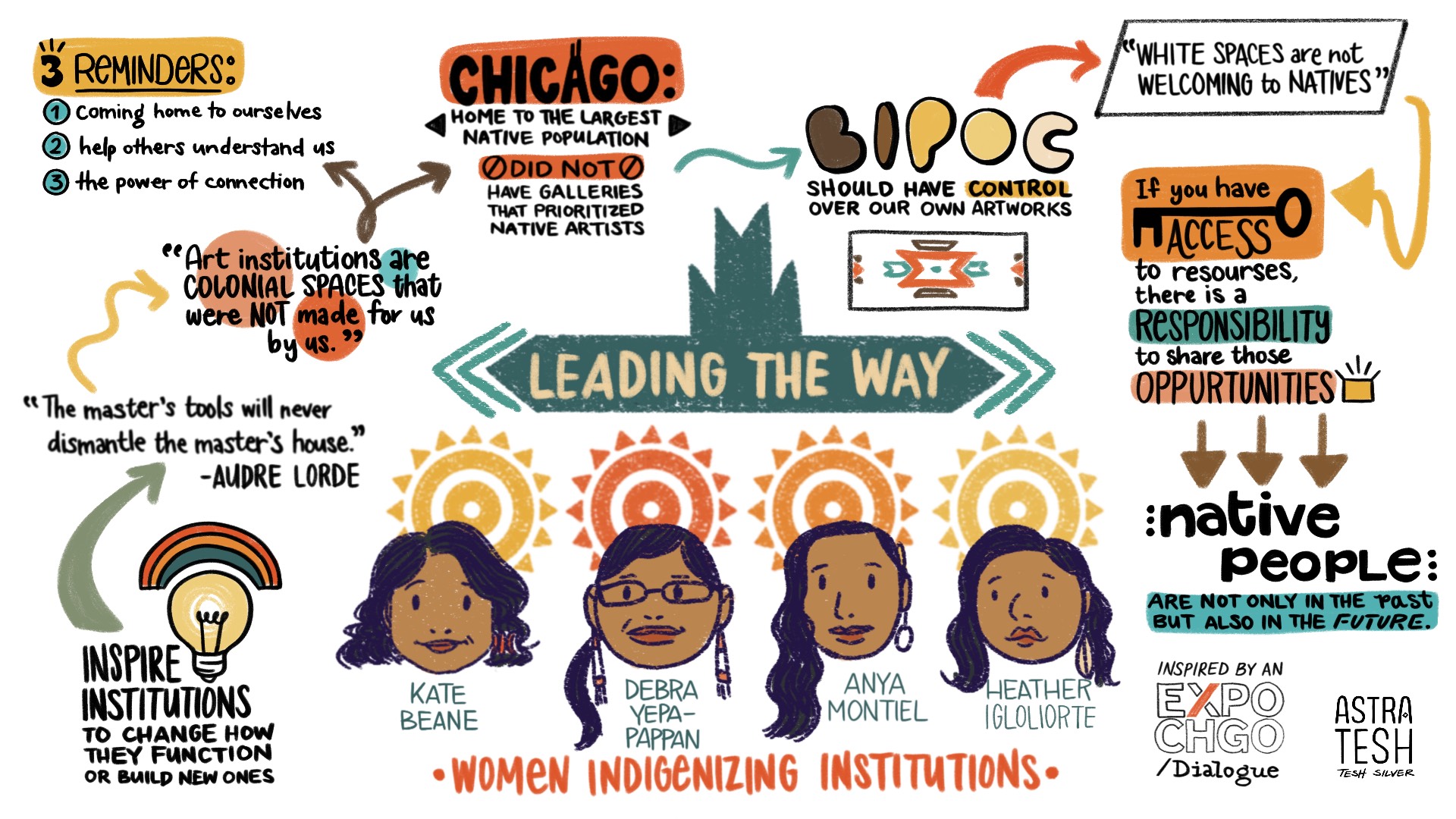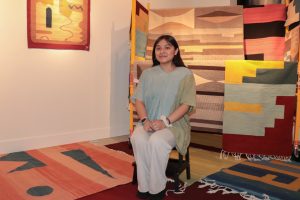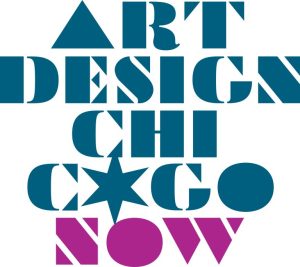
This article is presented in conjunction with Art Design Chicago Now, an initiative by the Terra Foundation for American Art that amplifies the voices of Chicago’s diverse creatives, past and present, and explores the essential role they play in shaping the now.
I recently attended a talk with Kate Beane (Executive Director, Minnesota Museum for Indian Art) in conversation with artist Debra Yepa-Pappan (Co-Founder, Center for Native Futures & Native Community Engagement Coordinator, Field Museum), Heather Igloliorte (Co-Director, Initiative for Indigenous Futures), and Anya Montiel (Curator of American and Native American Women’s Art and Craft, National Museum of the American Indian) at EXPO Chicago.
I identify as a Purepecha woman, I am also a Mexican Chicana, born and raised in Califaztlan, home to the Chumash, Tongva, and Kizh Nations. Currently living and loving in Chicago, ancestral lands of the Peoria, Kaskaskia, Piankashaw, Wea, Miami, Mascoutin, Odawa, Sauk, Mesquaki, Kickapoo, Potawatomi, Ojibwe, and Chickasaw Nations. As an artist and writer, I am always on the lookout for exhibitions that showcase art by Indigenous people that elevates our beauty and boasts our worth.
I’ve dreamed of one day having the means to bring to life a Purepecha exhibition. I truly pray that a white institution doesn’t beat me to it. It’s beyond a shame that most Native art is made by women, while so little of those women ever get the credit for their work due to the continuing effects and practices of colonialism and cultural imperialism.
So, it was with great pleasure that I was invited to EXPO Chicago to share space and reflect on the words shared by Kate Beane (Bdewakantunwan Dakota), Debra Yepa-Pappan (Korean and a tribally enrolled member of the Pueblo of Jemez), Heather Igloliorte (Inuk, Nunatsiavut), and Anya Montiel (Tohono O’Odham and Mexican).
Beane, also known as the “Brings them Home Woman” led the conversation, which was more than fitting because she is one of the first Native Executive Directors of an American art museum in the United States. She emphasized three reminders: the importance of coming home to ourselves as Native people, helping other people understand who we are, and the power of connecting with one another. She began the conversation by stating the truth: “Art institutions are colonial spaces that were not made for us or by us.” Contemporary and modern art workers are living during a historical time where powerful Native women are doing the work to shift the ways in which we occupy spaces or find ways to create our own.
White spaces are not comfortable or welcoming for Natives to walk into. The work to make institutions safer for people of color is hard. It involves reflection, deconstruction, rebuilding, and community support. As I sat and listened to these women speak I kept hearing this quote in my head, “The master’s tools will never dismantle the master’s house,” by Audre Lorde. Chicago based artist Yepa-Pappan talked about her impactful work at the Center for Native Futures (the only Native founded and artist-led center in Chicago for Native artists) and her work in the Field Museum’s redevelopment of the Native American hall renamed the “Native Truths: Our Voices Our Stories.”
Mountains are hard to budge, but Yepa-Pappan’s dedication for creating visibility within and despite push back is inspiring to say the least. When she moved to the Midwest from the Southwest she was disappointed to find out that Chicago, which is home to the largest urban Native population, did not have galleries that prioritized and invited Native artists to participate, so she devoted her career to changing that.
As I walked around EXPO Chicago for the first time in ten years, I was so happy to encounter the CfNF Booth—it was Brown like me and the art told stories I did not see being told in any other booth. I’m hungry for more and I hope to see it in years to come. Montiel highlighted the importance of contemporary lived experiences of Native people and the necessary reminder that Native people are not only in the past but also in our future. Recently, she led efforts to document, exhibit, and archive Black-Indigenous art through a virtual exhibition titled, “Ancestors Know Who We Are” at the National Museum of the American Indian. As a backdrop while she was speaking, the panel slideshow displayed beautiful photos that were included in the exhibit of a Black-Indigenous couple juxtaposed to a portrait of Zerviah Gould Mitchell from 1860.
Montiel did something I haven’t seen done much by curators in the art community and that was her honest candor on speaking on her role as a non-Afro-indigenous curator. She reflected on how her identity required her to lean in on Afro-community members to support the execution of the exhibit. As a reminder: you do not have to be a person of color to listen and learn from POC. She elaborated on the importance of checking in on the needs of the community you work with, including the importance of prioritizing accessibility processes (even if it requires extra work), and reiterated the importance of compensating people for their work! Lots of us in the crowd had our notebook out and were taking notes on the tangible things we can all do, or advice on things institutions can do to make us feel seen and heard.
I also was looking forward to hearing Julia Lafreniere speak during the panel. She is the Manager of Indigenous Initiatives at Winnipeg Art Gallery (home to the largest Inuit art collections in the world) but she was not in attendance as previously announced. Thankfully, Igloliorte was there to create visibility for Canada’s Indigenous art community and scholars. Igloliorte is the first Inuk in Canada to receive a PhD in Art History. The question of why it took so long repeatedly came up as the women talked about their roles and accomplishments; they all mentioned the lack of opportunities and resources that are offered to indigenous communities in the Americas in contrast to the robust amount of white people in art institutions. In Canada, the art history being written about Inuk people was not led by Inuk people themselves, up until twenty years ago! That is thousands of exhibitions across the globe that did not include Inuk in those planning phases. As she was developing the Initiative for Indigenous Futures, Igloliorte made it a priority to offer training and mentorship opportunities to cultivate more Inuk change makers in society.
We should have control over our artworks. A change maker can be a filmmaker, a curator, art historians, art administrators, or a person with a great idea. If you have access to resources, there is a responsibility to share those opportunities with our communities. Due to the history of colonization and erasure, a legacy that the majority of institutions still hold and perpetuate, as a POC, it can be really difficult to walk into spaces where we don’t see anyone like us; oftentimes we get gas-lighted in those spaces.
If care isn’t a part of the environment, the weight becomes too much; and if you don’t understand what I mean, I recommend reading “This Bridge Called My Back: Writings by Radical Women of Color” by Cherríe Moraga and Gloria E. Anzaldúa. We need our people in the room with us, institutions that hire us only to meet quotas and ignore our demands for safer work environments frequently harm our wellbeing.
The women in the panel compared a lot of their experiences in art institutions to that of a toxic relationship. Igloliorte added that even when people within institutions are not trying to cause any harm, they do so by not understanding or taking the time to understand and care about the cultural differences.
When we are doing all the work for institutions, that for hundreds of years have not held space for us and our voices, we will experience burnout. It is tiring to educate others constantly and to do all the work to ensure the cultural work is inoffensive.
With hope, I am excited to see Natives in leadership positions, with teams made up of community members. Montiel confessed she voiced demands at an American art museum she held a position at not to display a faux Black Feet Nation art piece. Exhausted and ignored she left the position after one year. Now working at NMAI, she appreciates the ethical and social justice aligned mission which allows her to be heard when voicing concerns as they come up.
Yepa-Pappan highlighted the importance of rest. While working at the Field Museum she prioritized time to come back to her center. She recalled a moment when she took a visiting friend and her family to the gardens to pick medicine from the yards at the Field Museum, which made the visit to the institution a much more welcoming and holistic experience.
I love art, I’ve been a curator and organizer in Chicago’s art scene for more than five years and I make sure to bring my Brown punk identity with me whenever I sit in the planning committees I am a part of to ensure that we are cultivating safer spaces that are not so cold and problematic.
Too many times I have left underpaid positions because the white leadership have run my patience dry—being belittled in front of others for forgetting a minor task, overworking to meet immediate deadlines, assimilating to respectability politics that did not align with who I am culturally. Both of my identities of Chicana and Purepecha have a history of being deemed “violent” and “aggressive” but both those traits have helped us overcome colonization and conquest in Mexico and beyond. When people are quick to “other” us they miss the opportunity to build with each other and cultivate division on lands and institutions built on stolen land.
With gratitude, I take all these women’s words and hope they continue to inspire institutions to change how they function or that they give us guidance in building new ones.
This essay coincides with the panel discussion “Leading the Way: Women Indigenizing Institutions” presented by Chicago-based Center for Native Futures (CfNF) and EXPO Chicago, which took place on April 14, 2023, 12pm-1pm. Participants of the discussion included CfNF co-founder and artist Debra Yepa-Pappan is in conversation with Heather Igloliorte (Co-Director, Initiative for Indigenous Futures), Anya Montiel (Curator of American and Native American Women’s Art and Craft, National Museum of the American Indian), and Julia Lafreniere (Manager of Indigenous Initiatives, Winnipeg Art Gallery).
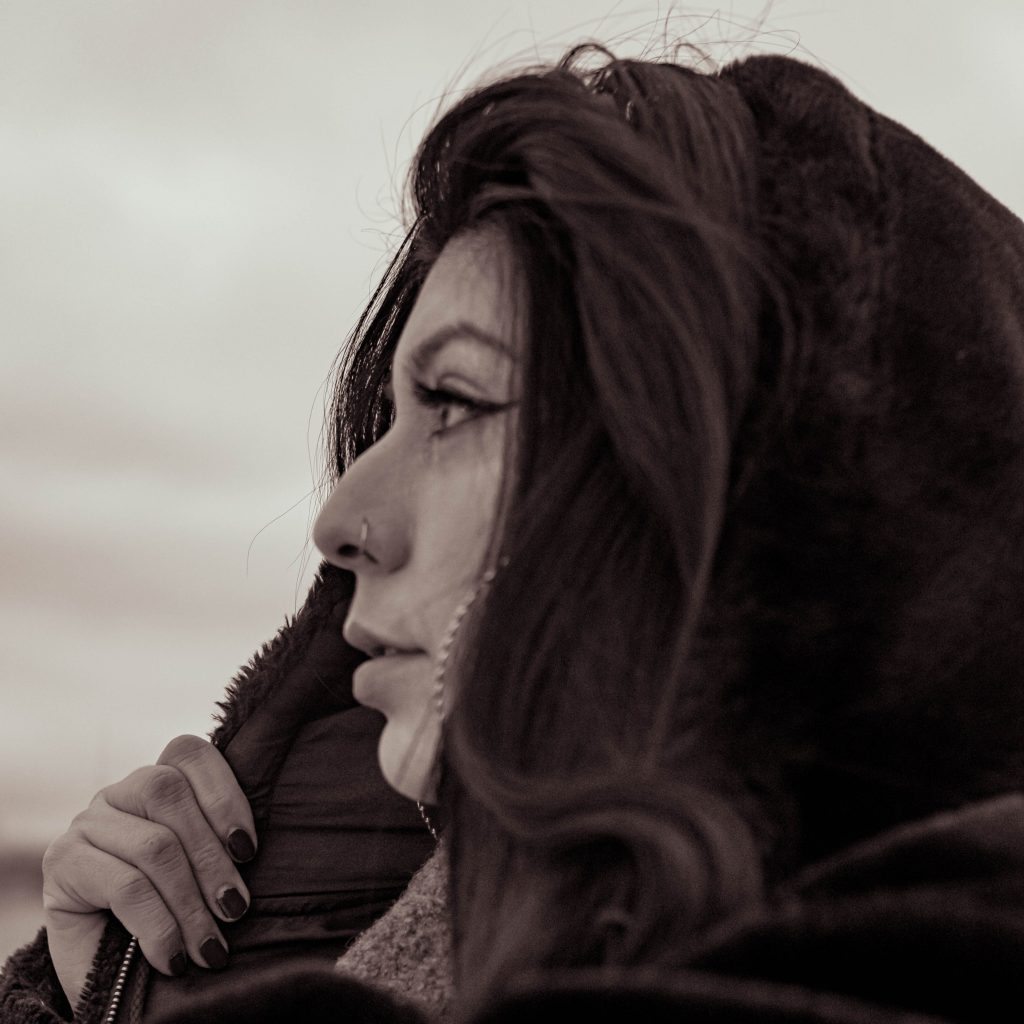
About the Author: Luz Magdaleno Flores is a Queer Chicana editor, writer, artist, and content creator based in Pilsen by way of Oxnard, California, also known as DJ Light of Your Vida. She currently sits as the Bilingual Editor for Sixty Inches From Center, is a Poet in Residence with the Chicago Poetry Center, and has published La Pera Chapbook, Bajito & Suavecito Foto Zine, Cultura Mexicana en Pilsen y La Villita Chicago and ¿SERIO? Zine. @lightofyourvida
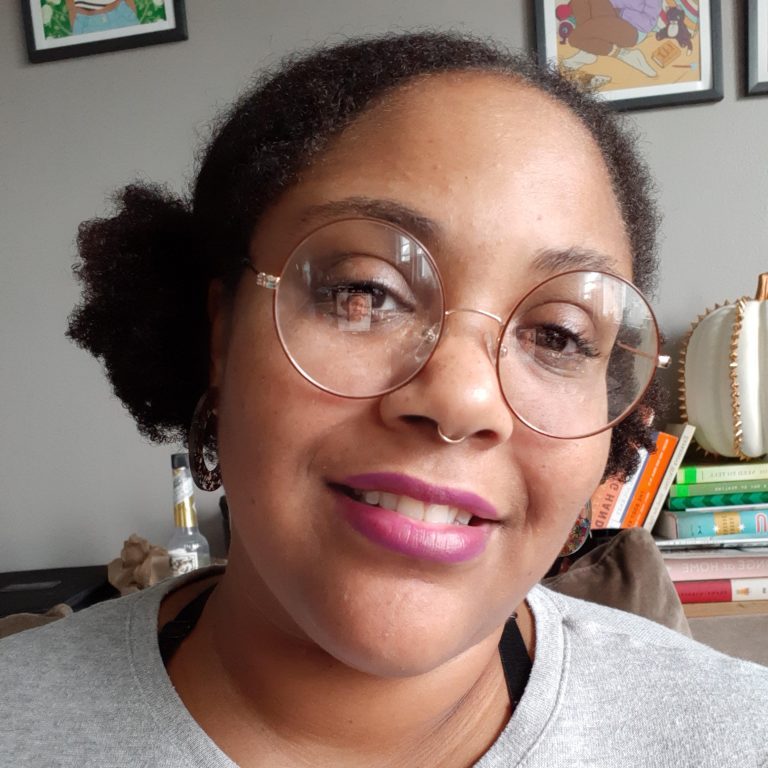
About the Illustrator: Teshika Silver is a freelance illustrator, designer, teaching artist and spiritual cultural worker spending time and living freely in Washington Park, Chicago. Follow her work on Instagram @astratesh.
